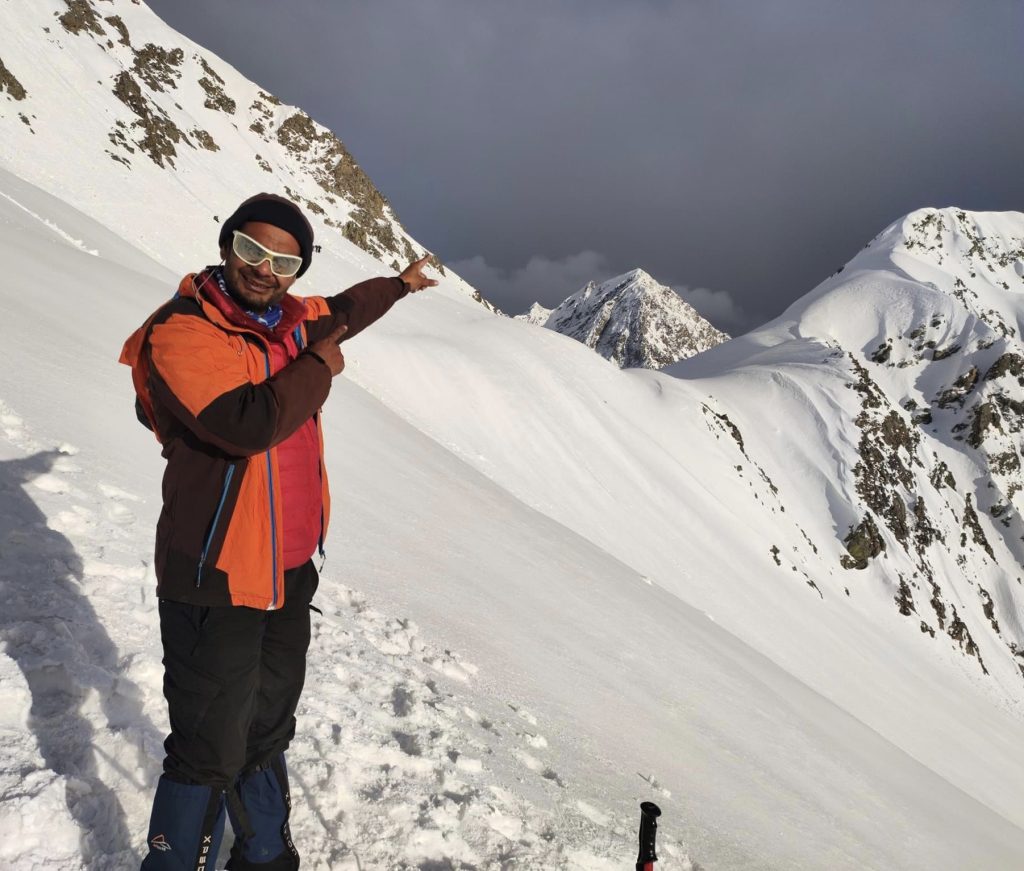A Tale of Survival and Resilience
In a gripping story of determination and survival, Pakistani mountaineer Asif Bhatti, who was stranded on Nanga Parbat due to snow blindness, has successfully made his way back to Base Camp. This article chronicles the incredible rescue operation that led to his safe return, highlighting the efforts of the ground rescue team and the courage of Bhatti himself. From the treacherous conditions on the Killer Mountain to the imminent risks faced by climbers, we delve into the challenges of conquering Nanga Parbat and the indomitable spirit of those who dare to climb its formidable slopes.

Asif Bhatti : Stranded on Nanga Parbat
On Monday, July 3, Asif Bhatti, a seasoned Pakistani mountaineer, found himself in a precarious situation when snow blindness impaired his vision. Stranded on Nanga Parbat, the ninth-highest mountain in the world, Bhatti faced a daunting challenge. However, he refused to succumb to despair and held onto hope, knowing that a rescue operation was underway.
The Rescue Operation
Bhatti’s rescue operation was a collaborative effort involving various individuals. Azerbaijan’s mountaineer, Israfyl, played a vital role in assisting Bhatti in reaching Camp Two from Camp Four. Meanwhile, a ground rescue team consisting of Fazal Ali and Mohammad Younis remained present at Nanga Parbat, ready to offer support and assistance.
The Delays and Challenges
The rescue operation faced several obstacles along the way. On Wednesday, July 5, a rockfall occurred at Nanga Parbat, causing a delay in the rescue mission. Additionally, two volunteer climbers who ventured to the upper slopes of the mountain were unable to proceed further due to the rockfall. The Karakoram Club shared updates on Twitter, expressing concerns about the worsening weather conditions and emphasizing that helicopter rescue was the only hope.
The Treacherous Nanga Parbat
Nanga Parbat, aptly nicknamed “the Killer Mountain,” poses significant risks to climbers due to its daunting ascent and hazardous conditions. With its towering height of 8,126 meters, the mountain presents a formidable challenge to mountaineers worldwide.
High Fatality Rate
Before the first successful ascent in 1953, Nanga Parbat claimed the lives of 31 climbers who attempted to conquer its peak. This tragic history contributes to its reputation as a perilous mountain, where the margin for error is slim, and the consequences can be fatal.
Unstable Glaciers, Avalanches, and Storms
Nanga Parbat is notorious for its unstable glaciers, which pose a constant threat to climbers. Avalanches are a common occurrence, triggered by the treacherous combination of steep slopes and heavy snowfall. Furthermore, the mountain is often battered by fierce storms, further adding to the dangers faced by mountaineers.
The Return to Base Camp
After enduring days of uncertainty and challenging conditions, Asif Bhatti successfully reached Base Camp on Thursday. This achievement was a testament to his resilience and the collective efforts of the rescue team. However, the journey to safety was not yet complete.
Army Chopper to Skardu
To ensure Bhatti’s complete recovery, an army chopper was dispatched from Nanga Parbat base camp to transport him to Skardu. Skardu, a city in northern Pakistan, is known for its medical facilities and will provide Bhatti with the necessary care he requires after his ordeal on the mountain.
Return to Islamabad
Once Asif Bhatti has received the initial medical care in Skardu, he will make his way back to the capital city, Islamabad. Islamabad is home to advanced medical facilities and specialists who will further assess his condition and provide any additional treatment he may need. The journey from Skardu to Islamabad will mark the final leg of Bhatti’s remarkable journey from the heights of Nanga Parbat to the comforts of civilization.
The Perilous Nature of Nanga Parbat
Nanga Parbat’s reputation as a treacherous mountain is well-deserved. Its formidable height, combined with the ever-present risks of unstable glaciers, avalanches, and storms, makes it one of the most dangerous peaks in the world.
A Challenging Ascent
The ascent of Nanga Parbat is not for the faint of heart. The mountain presents climbers with steep slopes, icy cliffs, and narrow ridges that require exceptional skill and experience to navigate. The physical and mental demands of such a climb are immense, testing the limits of human endurance.
The Legacy of Tragedy
Nanga Parbat’s history is marred by tragedy. Prior to the successful ascent in 1953, numerous attempts to conquer the mountain resulted in the loss of many lives. The mountain’s unforgiving nature and unpredictable conditions have earned it the grim moniker of “the Killer Mountain.” Each climber who dares to take on its challenges faces the weight of this legacy.
The Third Most Dangerous Peak
With a death ratio of 22.3%, Nanga Parbat ranks as the third most dangerous mountain peak in the world. This statistic serves as a stark reminder of the risks faced by mountaineers who venture into its treacherous terrain. The constant battle against nature’s elements and the inherent dangers of high-altitude climbing make Nanga Parbat an ultimate test of skill, courage, and resilience.
Triumph in the Face of Adversity
Asif Bhatti’s safe return to Base Camp marks a triumphant moment in the midst of adversity. His story highlights the unwavering spirit and determination of mountaineers who conquer the world’s most challenging peaks. Nanga Parbat’s reputation as a formidable mountain serves as a reminder of the risks inherent in such daring endeavors. Yet, it is through these experiences that mountaineers push the boundaries of human achievement and inspire awe and admiration.
Author Profile
- Khalid Javed is known as Khalid Minhas is editor of Daily Olympic.He is a seasoned journalist and worked with different national and international media outlets.
Latest entries
 CricketNovember 8, 2025Explosive Ayub Blitz Secures Pakistan ODI Series Win
CricketNovember 8, 2025Explosive Ayub Blitz Secures Pakistan ODI Series Win CricketNovember 8, 2025“Ice Broken”: India and Pakistan Begin Negotiations to Resolve Asia Cup Trophy Deadlock
CricketNovember 8, 2025“Ice Broken”: India and Pakistan Begin Negotiations to Resolve Asia Cup Trophy Deadlock FootballNovember 7, 2025FIFA World Cup 26 Play-Off Draw Set for November 20
FootballNovember 7, 2025FIFA World Cup 26 Play-Off Draw Set for November 20 NFLNovember 7, 2025Fox Sports Replaces Mark Sanchez with Drew Brees
NFLNovember 7, 2025Fox Sports Replaces Mark Sanchez with Drew Brees
